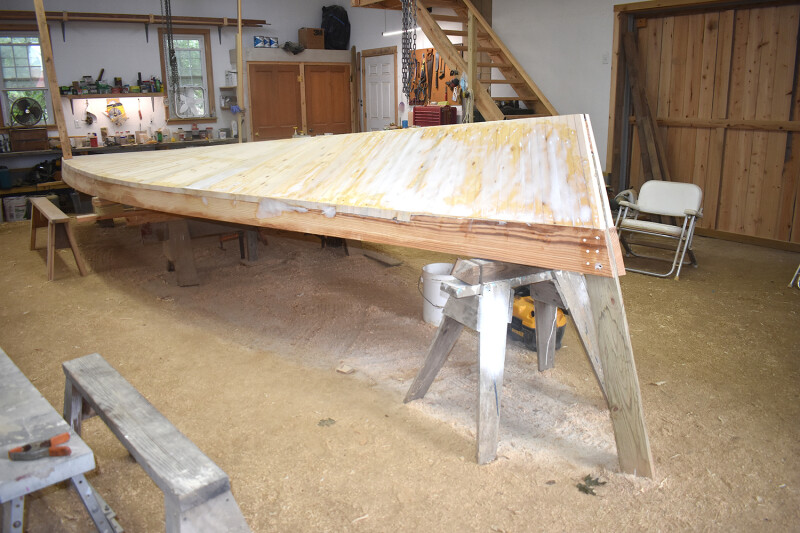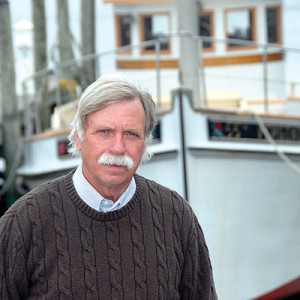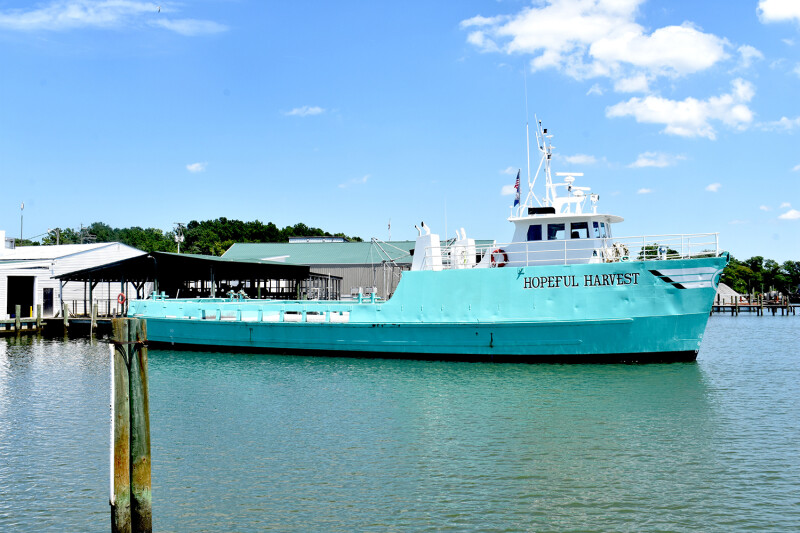The 96' x 24' Hopeful Harvest recently made the eight-day voyage from the Gulf of Mexico to Chesapeake Bay with its captain and crew from Bayou La Batre, Ala.
As mentioned in the August column, Bayou Shipbuilding & Services in Mobile, Ala., converted the offshore supply vessel into an oyster planter for W.E. Kellum Seafood in Weems, Va.
The hull of Hopeful Harvest was built in 1982 as an OSV used to haul supplies, and certified then to carry 32 passengers to and from oil rigs in the Gulf of Mexico. Jeff Kellum, one of three brothers who own W.E. Kellum Seafood and Kellum Brothers, says he purchased the boat in Venice, La., at a bank foreclosure sale.
Bayou Shipbuilding & Services sandblasted and painted the boat and made changes to accommodate the Kellums’ oyster planting business. As an OSV, starboard and port deck sides were solid from the house to the stern. The yard cut rectangular slots in the sides so spat and shell can be blown through the slots off the deck and into the water.
A high-pressure water cannon was installed just aft of the house to blast the shell and spat off the deck. The cannon pump runs off a Caterpillar 3208 Diesel engine. Hopeful Harvest can carry 3,000 bushels of shell or spat which can be off-loaded in 20 minutes.
The yard also reworked the wheel and shaft and built a containment trough under the shaft so when water collects it can be pumped out by way of a bilge pump.
New World Electronics of Bayou La Batre installed a Furuno radar, Si-Tex satellite compass, Simrad A2004 autopilot pack, Comnav Jog Lever steering system, and a VHF radio.
The boat has a stateroom with four bunks and a full galley to accommodate crew. Hopeful Harvest is powered by two 12V-71, 450-hp Detroit Diesel engines, and it has two Detroit 3-71 30-kW marine diesel generators to run the electrical system.
Since the boat arrived in Weems, the Kellumses have used it to plant six loads of spat and shell on Temple Bay oyster rock in the Rappahannock River for Virginia’s Oyster Replenishment Program.
A couple years ago, I was invited to see the last boat built by Francis “Pap” Harper Jones of Ocran, Va., who on his death left a wooden deadrise hull unfinished inside his shop. His death in 1979 brought an end to the work on the boat and the operation of his boatshop. The unfinished hull sat inside the shop for 40 years. For a longtime boating writer, it was like an archaeologist entering an Egyptian tomb and finding a pharaoh’s golden casket. There was an array of planks, fasteners and old tools left from the last day Jones worked, and the hull was perfectly preserved.

This brings up an interesting aspect of boatbuilding seldom mentioned: What’s to be done with that last boat, still in the shed and no one left to finish it?
That was the dilemma of Martha Oliver and Willard “Tuna” Norris of Deltaville, Va., whose father, Willard Hamilton Norris, passed away on Jan. 7, 2021, at 94 years of age. (See the April 2021 column). When Norris died, there was a 25' x 9' deadrise hull under construction in his shop and the family ended up giving it to the Deltaville Maritime Museum boatshop.
“Martha and Tuna were getting ready to sell the house and boat shed, and needed a place for the boat to go,” says John England, museum boatshop director.
“We used the block and tackle in the ceiling of Willard’s boatshop to hoist the boat up onto our trailer and then we hauled it to our boatshop,” he says. “We are going to finish it off exactly the way Willard would have done it.”
The museum plans to sell the boat on completion. But before it’s sold, the organization plans to hold a celebration to honor Norris and to thank the Norris family for donating the boat, says England.
“We are delighted and honored to have the opportunity to finish Willard Norris’s last boat!” he says.
The structural elements of the boat — including the 8" x 8" keel, chine log and timbers — are made from yellow pine. The cross-planked bottom and longitudinally laid sides are made of spruce. The bottom will be glassed over with 1208 biaxial cloth and resin.
England says the museum boatshop has built several deadrise boats of this size. Oystermen find the platform to be ideal for working in Virginia’s wintertime public oyster dredge fishery.
“I don’t think we will have any trouble finding a home for this boat,” says England. “It is ideal for working crab pots and dredging oysters, and it is Willard’s last boat.”







